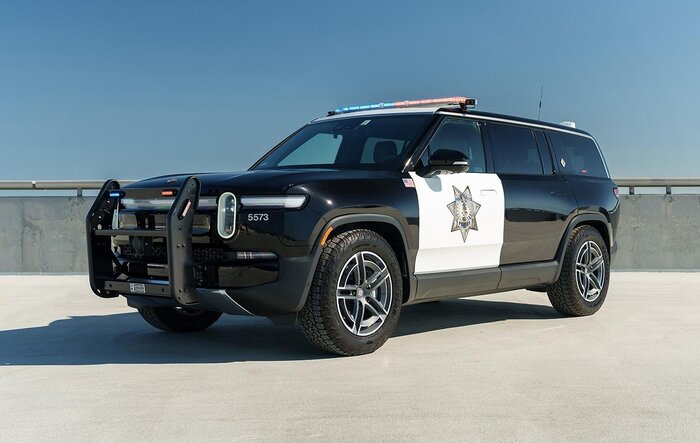In an era where sustainable mobility is no longer just an option but a necessity, electric vehicle (EV) manufacturers are racing to enhance the infrastructure supporting their products. Rivian, a name synonymous with innovation in the EV sector, has taken a significant leap forward with its latest charging network expansion. This development aims to make urban EV accessibility more convenient, a crucial factor as cities worldwide pivot towards greener transport solutions. By the end of this article, you’ll have a comprehensive understanding of how Rivian’s strategic moves are transforming urban EV charging and what this means for the future of sustainable urban mobility.
Rivian’s Expansion: A Game Changer for Urban EV Charging
Rivian Charging Network: A New Urban Frontier
Rivian’s expansion into urban areas marks a pivotal shift from its initial focus on adventurous, off-the-beaten-path destinations. With the launch of over 600 new urban charging stations projected by 2025, Rivian is setting the stage for a more connected EV ecosystem. These urban stations, strategically placed in high-density areas, aim to alleviate “range anxiety,” a common concern among EV users.
- Strategic Locations: Stations are being installed in key metropolitan areas such as Los Angeles, New York, and Chicago, where EV adoption is rapidly growing.
- Fast Charging: Rivian aims to equip each station with at least four fast chargers capable of delivering up to 200 kW, significantly reducing charging times.
- User Experience: Stations will feature user-friendly interfaces and robust customer support, enhancing the overall charging experience.
Rivian’s approach reflects a broader trend noted by Electrek, where EV manufacturers are increasingly focusing on urban areas to drive adoption and accessibility.
The Technology Behind Rivian’s Network
Rivian’s charging stations are equipped with cutting-edge technology designed to optimize energy efficiency and user convenience. According to Wired, the brand employs a mix of proprietary software and hardware to ensure seamless integration with its vehicles.
- Smart Charging: Rivian’s stations utilize smart charging technology, allowing for demand-based power distribution and reducing grid impact.
- Renewable Integration: Partnering with renewable energy providers, Rivian ensures that its charging network is powered by sustainable sources, aligning with global green energy trends.
- App Integration: The Rivian app offers real-time updates on charging availability and station status, providing users with a streamlined, efficient experience.
This technological edge not only enhances the charging process but also contributes to a more sustainable energy landscape, a point highlighted in CleanTechnica’s recent coverage of EV infrastructure advancements.
Practical Guide to Using Rivian’s Charging Network
How to Charge: A Step-by-Step Guide
Understanding the charging process is crucial for any EV owner. Here’s a simplified step-by-step guide to charging your Rivian vehicle at one of their urban stations:
- Locate a Station: Use the Rivian app to find the nearest urban charging station.
- Plug In: Connect your vehicle to the charger using the provided cable.
- Activate Charging: Initiate the charging process via the app or on the station’s touchscreen.
- Monitor Progress: Keep track of your charging status through notifications sent to your app.
- Unplug and Go: Once charging is complete, simply unplug your vehicle and continue your journey.
Where to Buy: Expanding Access to Rivian Vehicles
As Rivian expands its charging infrastructure, the company is also increasing the accessibility of its vehicles. With showrooms in key urban centers and an intuitive online purchasing platform, Rivian makes it easier than ever to join the electric revolution.
- Online Orders: Potential buyers can customize and order their vehicles online, with expected delivery timelines clearly communicated.
- In-Person Experience: Test drives and consultations are available at Rivian’s urban showrooms, offering a hands-on experience with their latest models.
What This Means for Urban Mobility
Rivian’s charging network expansion is set to redefine urban mobility by addressing key barriers to EV adoption, such as charging convenience and infrastructure reliability. As noted by Bloomberg Green, this initiative aligns with global efforts to decrease urban carbon footprints and promote sustainable transportation solutions.
- Increased EV Adoption: With more accessible charging options, urban residents are more likely to switch to EVs.
- Reduced Emissions: As more EVs hit the road, urban areas can expect a significant reduction in vehicle emissions, improving air quality and public health.
- Economic Benefits: Investment in charging infrastructure creates jobs and stimulates local economies, as detailed in a recent Reuters Mobility report.
Conclusion: Rivian’s Role in the Future of Urban Transportation
Rivian’s strategic expansion of its charging network underscores the brand’s commitment to fostering a sustainable urban transport ecosystem. By making EV charging more accessible and efficient, Rivian is not only enhancing the appeal of its vehicles but also contributing to a broader shift towards greener cities. As we look to the future, it’s clear that innovations like these will play a critical role in reshaping how we think about urban mobility.
What do you think about Rivian’s latest move towards urban expansion? Will it encourage more people to switch to electric vehicles? Share your thoughts in the comments and join the conversation about the future of sustainable transport. As cities worldwide continue to evolve, initiatives like Rivian’s are crucial in paving the way for a cleaner, more connected urban landscape.

